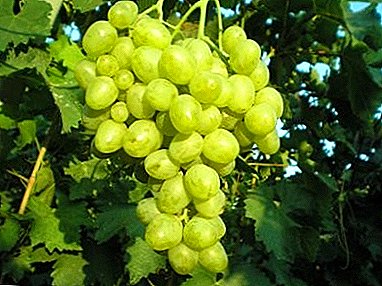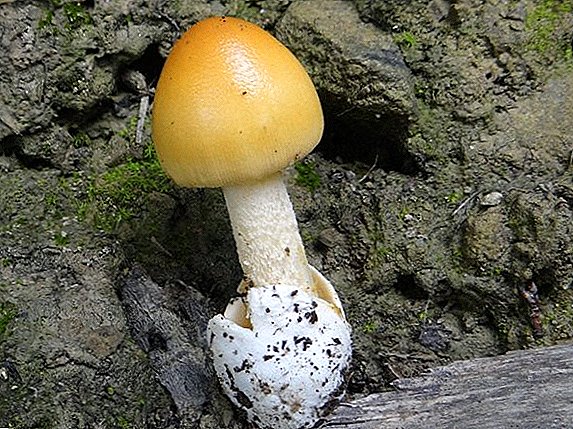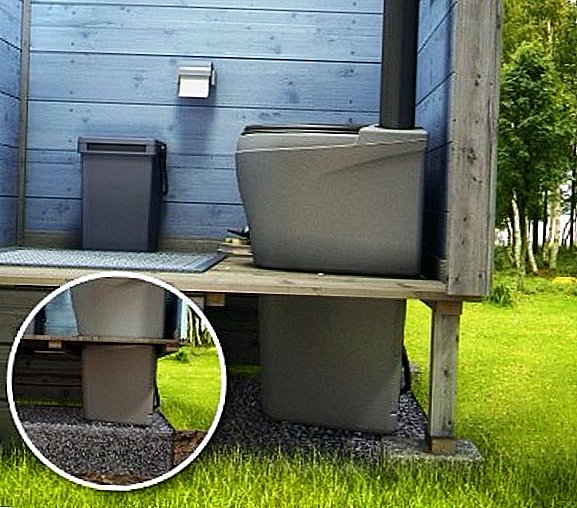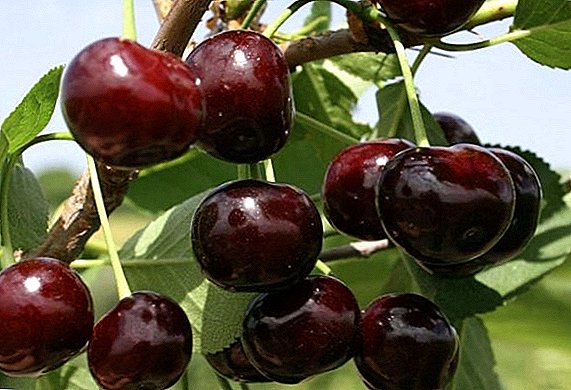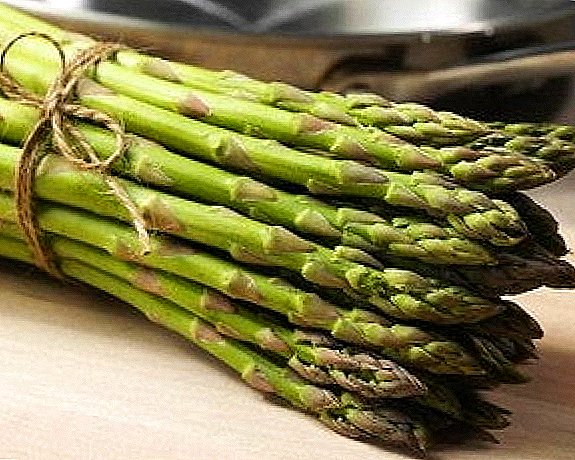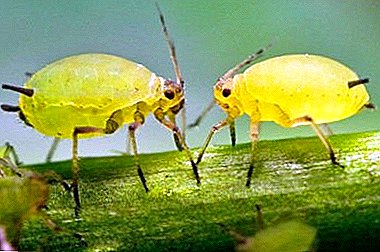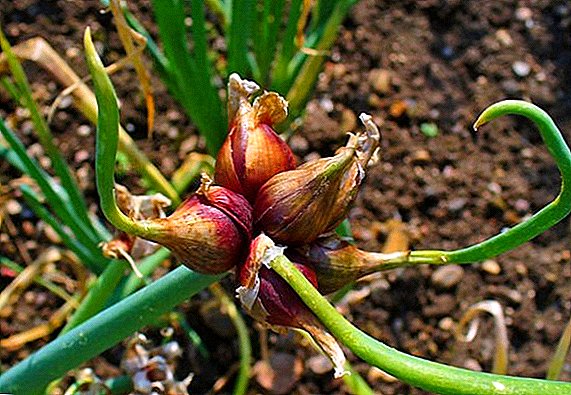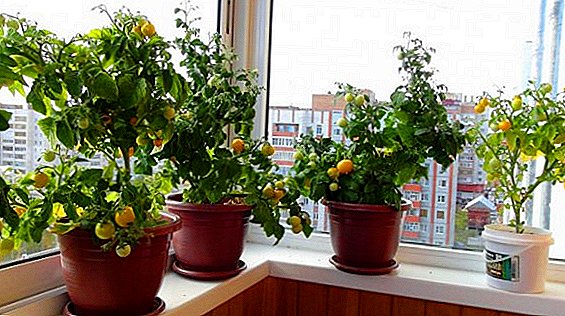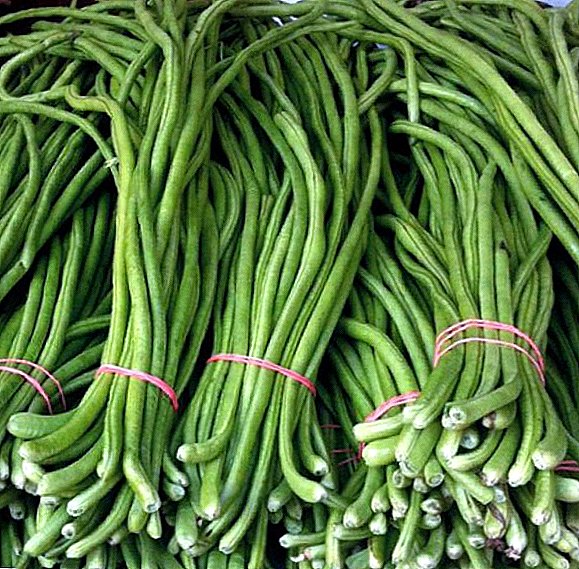 Gardeners love to experiment, and often on the beds appear unusual plants for our eyes. On one of these "aliens" - vegetable bean vigna, we will tell.
Gardeners love to experiment, and often on the beds appear unusual plants for our eyes. On one of these "aliens" - vegetable bean vigna, we will tell.
Vigne vegetable: description
This is a plant of the legume family. Also known as cowpea. It can grow as a shrub or half-crost, but most varieties develop as curly. As a separate species, Vigna vegetable spread from Central Africa, but it became truly popular in China. Asparagus forms were developed on the fields there, which ensured the popularity of this culture.
The fact is that the asparagus vegetable beans have long fruits in the form of beans. One arrow with seeds can reach one meter in length.. The blades themselves are tasty and tender, and without fibers. She loves heat very much, so in our latitudes landings precede growing seedlings.
Representatives of the legume family are also: beans, mouse peas, peas, acacia, cercis, vetch, sweet peas.
Varieties of this type as Vigna Chinese differ in variety. Longer length is characteristic of climbing lines (“Chinese”, “Long Black,” “Countess”). Early varieties are bush forms with beans up to 10–12 cm long (“Katyang”, “Adzuki”, “Mash”, “Korean”). Fruits of 30 - 40 cm are pleased by mid-ripened semi-tastes "Macaretti" or "Darla".
It differs from regular beans in straight lower petals. Peduncles - long, going up, on each up to eight purple or white flowers. The leaves are large.

Important! Timely "pinching" will retain the strength of the plant, thereby bringing the harvest time closer.
The pods are used in cooking and in the treatment of a number of diseases (gastric, various inflammations and kidney problems). True, they are not consumed raw, heat treatment is necessary.
Having found out what good is the asparagus bean vigna, pay attention to the features of its cultivation.
How to choose a place for planting cowpea
Because of its origin, such beans need special care. Therefore, we will choose the place and the ground for disembarkation taking into account its “character”.
Lighting Requirements
Light access is mandatory, so look out for a well-lit area. Too lush green will not be the best neighbor for cowpea. If difficulties arise with constant illumination, light (this is important) partial shade will do as well.
A heat-loving plant hardly endures temperature fluctuations, even at the seed growth stage a warm microclimate is needed. It is not difficult - the soil in the pot for a while covered with film or glass, and put on the windowsill.
Did you know? With proper maintenance, plants of some varieties can reach a length of 5 m. The record for cowpea grown in culture is the figure of 7 meters.A pot or box with sown earth is put on the window on the south side. If this is not possible, give extra light (fluorescent lamp is enough).
What should be the soil for planting
Chinese Vigna different unpretentiousbut you should not abuse it. The composition of the soil can be any - beans will be taken even in sour or alkaline soil.

Our popular varieties are easily accepted in areas where habitual potatoes or cabbages were grown before, while legumes are considered to be bad predecessors. The moisture factor does not play a special role - drought resistance in this crop is high.
How to plant cowpea, growing cowpea from seeds
Growing cowpea by sowing is common practice. This is a simple job, but with its own nuances.
Landing dates
A specific date is easy to calculate. The main thing is that the Vigna itself and its growing from seeds should not depend on cold weather. Sowing takes place about a month (up to 35 days) before planting in open ground, which is usually done in the last week of April. Shoots appear at a constant temperature of at least 15 degrees, so the germination of seeds right in the pots is a common thing.
Important! Small temperature drops are transferred without difficulty. Regular regime change, on the contrary, is very dangerous for beans.In different varieties, the growing season also differs, while the Chinese line produces seeds already at the age of 90 days (whereas the “Japanese” have this period of 150 days). If the seeds are of rare species, it is better to consult with the sellers.
Preparation of planting material
In a plant such as Vigna, the seeds are prepared in the usual way for us. They are pre-checked by removing damaged or color-changed grains. Note that the seeds do not differ from the bean.

You can briefly (20 minutes) soak the material in a strong solution of potassium permanganate, be sure to rinse after this procedure. There is another way - the day before sowing the seeds are placed in water heated to 30 - 35 degrees. This will stimulate further growth.
Features of planting cowpea, how to sow Chinese asparagus beans
Prepared dry seeds are laid in moist soil, at a small (up to 1 cm) depth. It is advisable to sprinkle the wells for the spray lines with a layer of mulch (2 cm of this substrate will retain moisture). The recess is done by a toothpick or other thin object.
If you plan to grow asparagus beans, it will be interesting to read about the benefits, varieties and growing plants.
The ground itself should be heated. If the sowing is done for the first time, then it is better to use the purchased substrate. A maximum of three grains are placed in the seedling pots. In the landing boxes will have to ensure the interval between crops.
Growing of cowpea seedlings
When gardeners plant beans for seedlings, they prepare for regular monitoring of "plots". Here are a few highlights about which need to remember:
- The moisture in the first days after sowing is artificially maintained by covering the pot or box with a film;
- As soon as shoots appeared, they remove the foam;
- Good seed does not require additional feeding in the first month;
- Additional lighting is set for at least half a day;
- Vigna poorly picks up.

Saplings do not require special delights at the stage of growth of seedlings, unless there is a need for periodic spraying of the soil.
Did you know? Cowpea beans are an excellent dietary ingredient. The protein content in them exceeds 25%.
Peculiarities of caring for cowpea
The seedling is pleasing to the eye, it is warming in the street - soon start the final planting of plants on the site. Let's see how this process happens.
Planting seedlings in open ground
Growing beans in the open ground begin one month after sowing (but no later than 35 days). Making sure there are no frosts anymore, proceed:
- Before planting, the soil is abundantly watered;
- Depth depends on the size (from 4 to 7 cm);
- Maintain a distance of 60 - 65 cm between the plants themselves, and 80 - between the rows.
- The bed can be mulched with humus.
Important! The soil for planting should warm to a depth of 10 - 12 cm.To ensure a balance of moisture and heat, the area with the seedlings is covered with a film placed on small arms. When cold snaps on top of it and throw a burlap. Such protection is removed already at average daily +15 ° С.

With a large number of seedlings, the planting plank plant in open ground provides for reusable seeding with breaks of 10–20 days.
Watering and feeding plants
Regular watering is carried out until the first four leaves, followed by its reduction. With the appearance of buds moistening is necessary. At the same time feeding and feeding:
- In 10 liters of water add 5 g of potassium chloride and 15 g of superphosphate. If there is no vitamin pill on hand, 100 g of ash will do. All these components are mixed;
- In parallel, a row (20 cm) for fertilizer is prepared wells up to 5 cm deep;
- After feeding, the grooves are covered with earth, and the soil is loosened.
Did you know? Bean dishes are great for treating heart disease. In addition, they are well absorbed - the loss of nutrients is minimal.
When the stem "kicked out" to 2.5 meters, pruning is done. It speeds up the ripening process.
Soil care
In the process of growth of bushes such care is reduced to traditional weeding and loosening after irrigation. The first loosening is done when the signal has grown to 7 cm. At the same time, it doesn’t deepen much.
In order to “unload” the soil, young plants are thinned out, putting a distance of 40 cm between them. A second loosening followed by weeding is done in two weeks.

For better yields, the open ground is dug up in the fall, and urea is added in the spring (15-20 g / m2). Organics are laid at the rate of 5–7 kg / sq.m (in areas with a temperate climate, this is done before prolonged chills). For mineral fertilizers, the dose is 30 g of superphosphate in the same area.
Vigna vegetable: harvesting Chinese asparagus beans
Vigna bean grows, and over time, growing and caring for it is replaced by harvest.
Important! Dry pods are removed as soon as they turn yellow. Wait for the "general cleaning" is optional.The beans are harvested 70 days after planting the seeds. Seed material is harvested when the stems, pods and leaves slowly dry out and become yellowish. Such stocks are stored in dry rooms at low temperatures (up to +7 ° C). Their germination reaches five years, if they are treated with a bay leaf (so they protect them from pests).

Pods with seeds that have reached the so-called milky freshness are suitable for canning and food. At this time, the seeds without difficulty choke fingers, “milk” flows out of them. If this fluid does not flow, but crushing them is just as easy, this is the same time. The blades themselves remain green.
Convinced of the beneficial properties of Chinese beans, many probably "prescribe" it in their garden. Now our readers know how to grow this culture.


